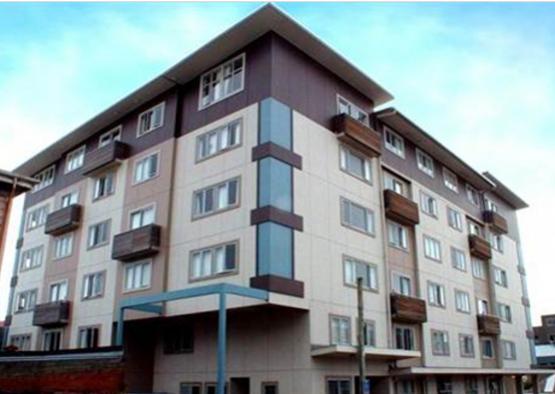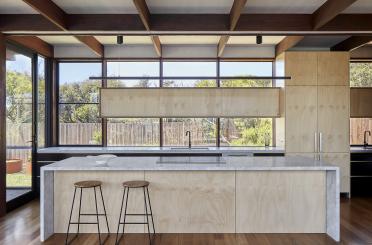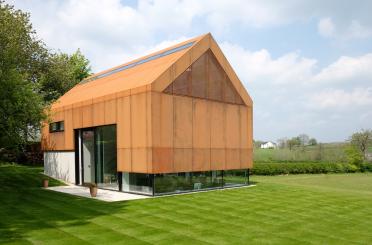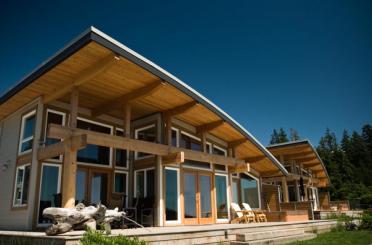
Overview
This six-level timber framed apartment building is under construction in New Zealand. The building, in Wellington, is in the highest seismic zone in the country and is predominately braced by plywood-lined walls. Specifically developed details address issues of acoustic performance, vertical load and lateral load resistance, and ductility under seismic attack. Use of such a system simplified the construction of a transfer structure between the apartments and car parking levels as well as providing an economical form of construction.
Structure
The 6-level timber super-structure consisted of an approximately rectangular floor plate, braced by predominately plywood-lined walls in each direction. These walls are typically on the line between adjacent apartments, where they can run 6 levels through the super-structure without penetrations. In two cases, where walls adjacent the boundary have no penetrations, these are used as bracing walls. In addition, there are some walls between studios and the corridor which are used as bracing walls. Refer to figure 2 for a plan lay out of the walls.
Interior
The floors for each level consist of 19-mm plywood fixed to proprietary timber I section joists. These joists, which are now commonly used in New Zealand, consist of mechanically graded timber chords glued to a plywood web. They achieve superior engineering properties compared with conventional sawn timber and may be handled and fixed in the same way as sawn timber joists. Various penetrations through the floor are present, allowing for 2 stairwells and a lift shaft, but also to provide services ducts distributed over the floor area.



